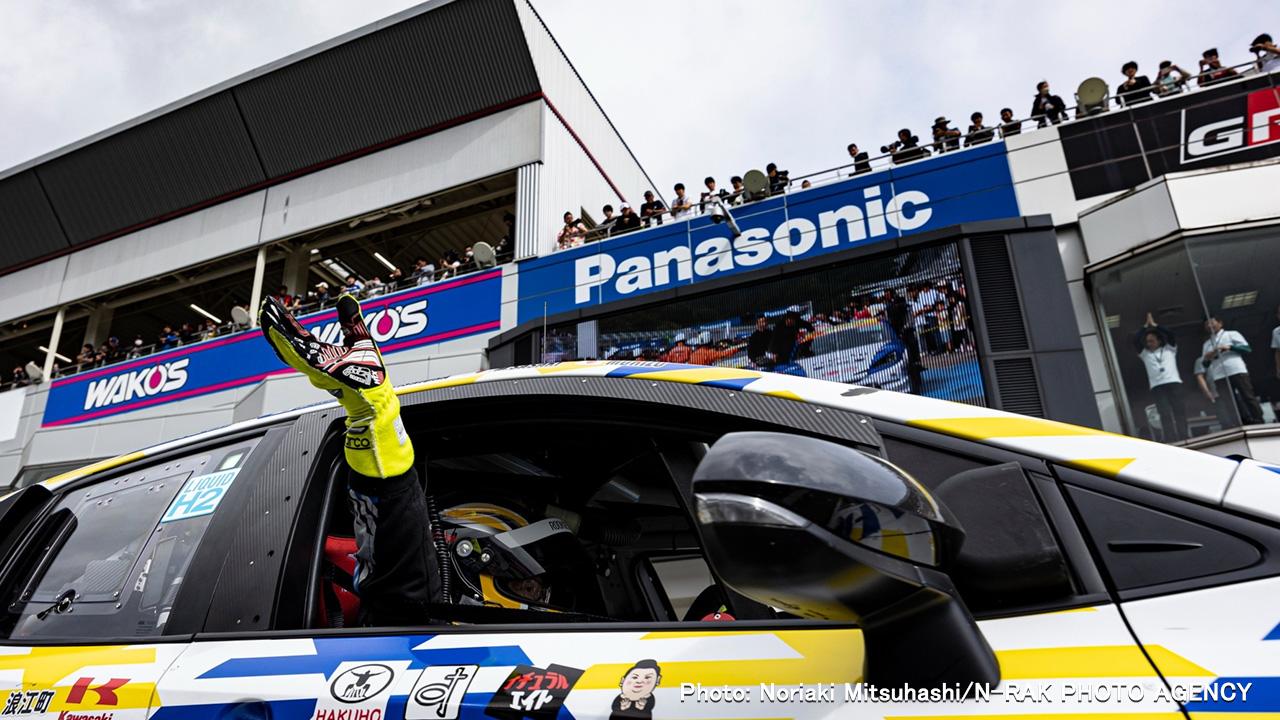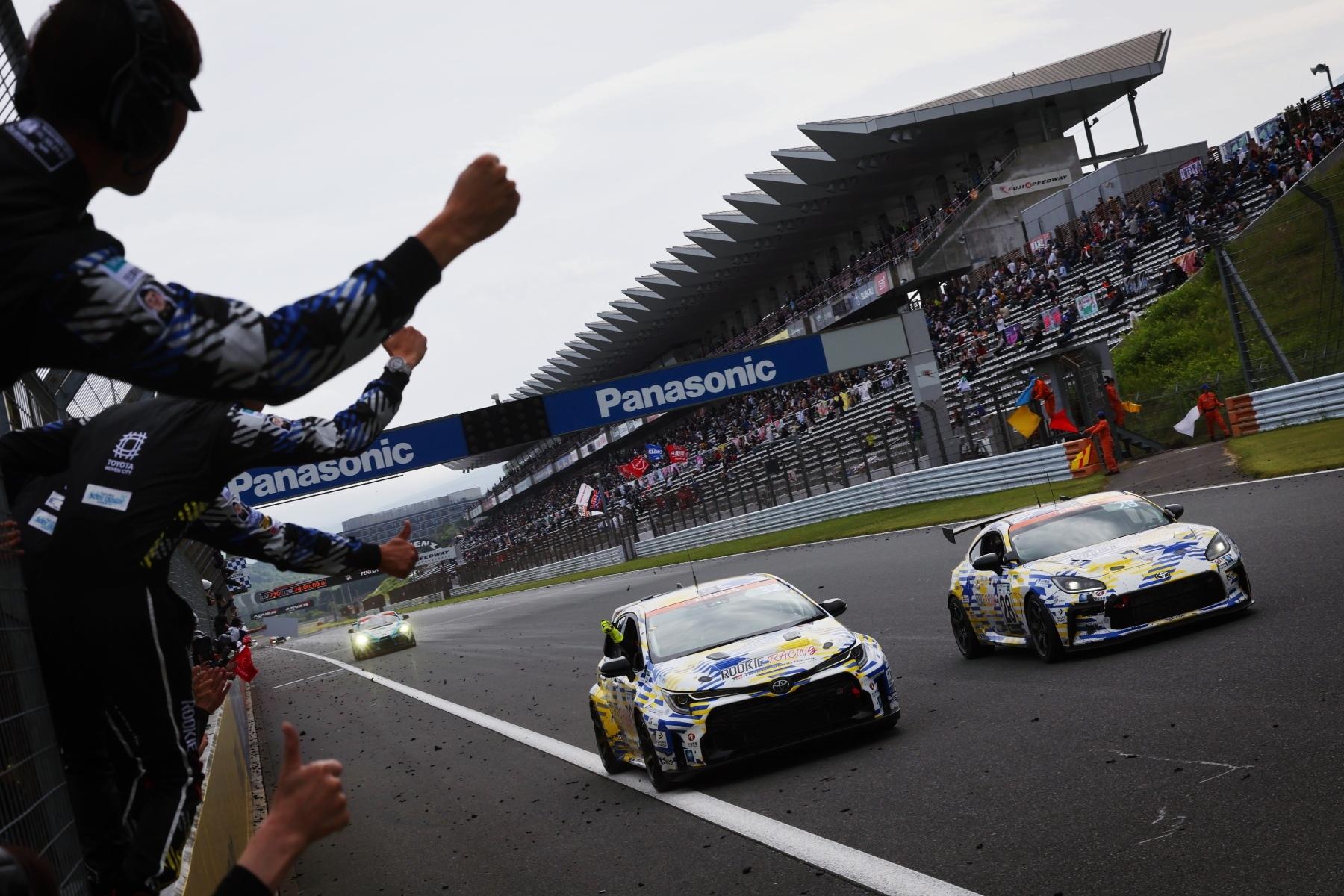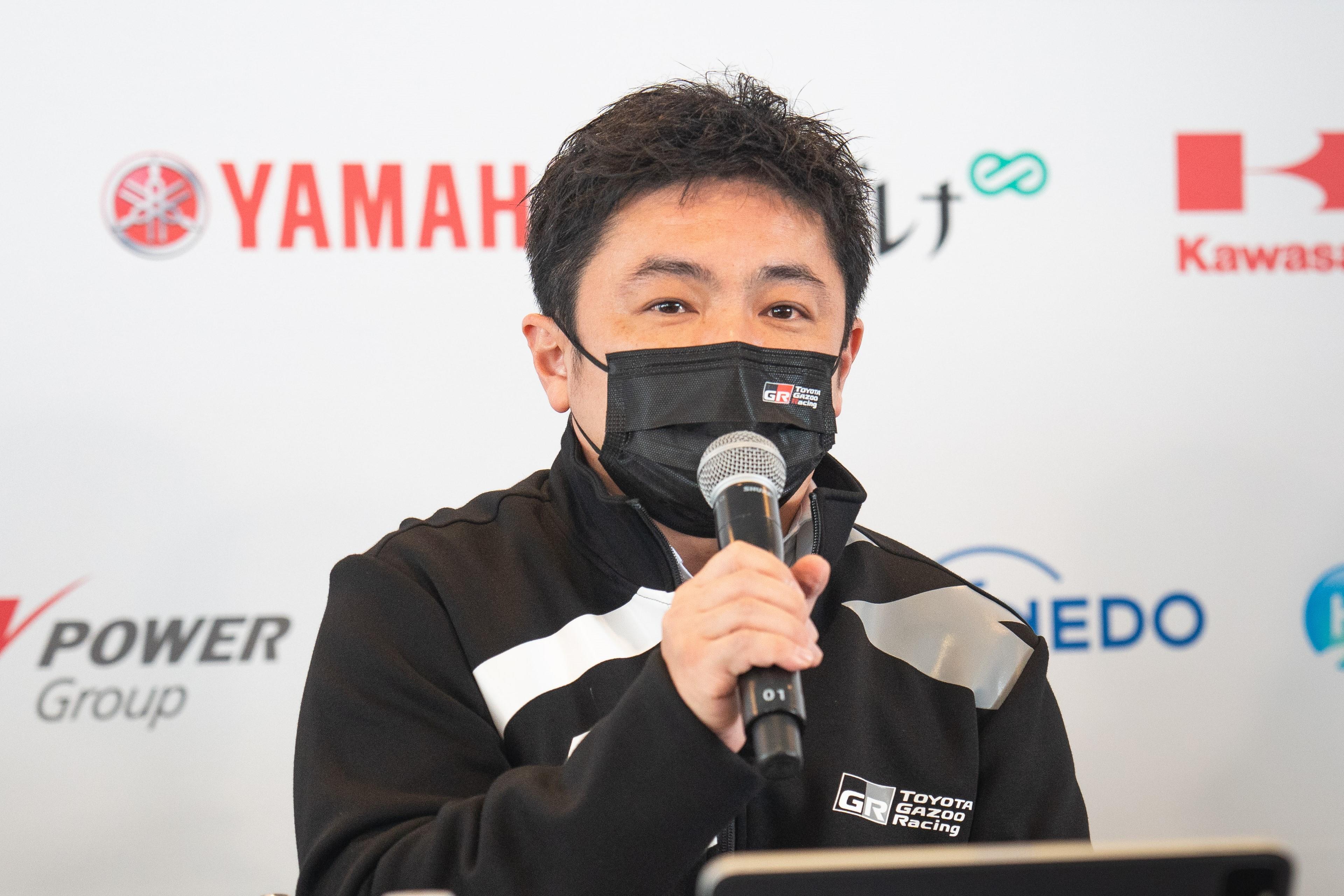
After just 18 months of development, Toyota's liquid hydrogen-fueled GR Corolla completed a 24-hour race. Toyota Times visited the genba to discover how this world-first endeavor succeeded.

On May 28, a liquid hydrogen-powered car developed by Toyota completed the NAPAC Fuji SUPER TEC 24 Hours Race, the second round of the 2023 ENEOS Super Taikyu Series.
Competing in a liquid hydrogen-fueled car was itself a world-first undertaking. Despite debuting in the series’ most grueling event, the 24-hour race, Toyota’s team completed 358 laps of Fuji Speedway in Oyama, Shizuoka Prefecture, a distance equaling 1,634 km.

This feat was accomplished after just 18 months of high-speed development, a period of continuous trial and error where every day brought its share of trouble.
Toyota Times reports from the genba, where we closely followed the development journey.
“Unless we start now, the future won’t change”
Let’s wind the clock back a year to the Super Taikyu Fuji 24 Hours in June 2022.
“We still haven’t been able to get it running. We have a long way to go, but the team is motivated and working hard, knowing that unless we start now, the future won’t change.”
This is how GR Vehicle Development Division General Manager Tomoya Takahashi (now GAZOO Racing Company President) described the state of development on the liquid hydrogen-fueled car, which began at the start of 2022.

Only a year after the H2 Corolla first raced on gaseous hydrogen, Toyota was already taking the next step toward decarbonization through motorsports.
Liquid hydrogen’s main advantage is its longer range.
The fuel’s energy density (energy per unit volume) is about 1.7 times that of gaseous hydrogen, allowing the car to drive that much further.
Unlike gaseous hydrogen, liquid does not require high pressurization, allowing greater freedom in tank design* and potentially opening up more space in the rear seat.
*Tanks must be cylindrical to distribute force evenly when high pressurization is required,
On the other hand, maintaining the ultralow temperature of -253°C at which hydrogen liquefies is difficult.
While the existing engine could be used as-is, the tank had to be specially developed with outstanding insulation to keep the hydrogen fuel in its liquid state.
Several new parts were also needed, including a booster pump to deliver the fuel, a vaporizer to heat the fuel and turn it into gas, and a pressure chamber to supply hydrogen to match the driver’s pedal input.
While many parts were still in being developed from scratch, the team’s engineers unveiled a mock-up version of the liquid hydrogen system for the press.

The reasoning was explained by Assistant Manager Ryosuke Yamamoto (GR Vehicle Development Division), who was involved in the development process.
“Though we were already collaborating with many suppliers, we wanted to get more partners on board to refine the technology together and turn it into something significant. We hoped more people would see this and step up to help.”


